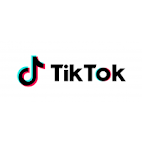TikTok as Professional Development
While taking ED 677, we were tasked with creating and maintaining a Twitter account to expand our professional learning community. This helped us to engage with and build a community of likeminded professionals that we could use to help better our understanding of using social media as professional development.
Early on in the course, we were asked to create an annotated bibliography for a topic that we were assigned. My topic was “Social Media as Professional Development”. There was so much that I wanted to say regarding this topic, but found that the research regarding the platforms that I wanted to explore does not exist yet. For example, I wanted to explore the impact that TikTok has had on educational professional development, but was unable to find any sort of articles or research pertaining to the platform. I believe that this is because the platform is still developing and not much research has been conducted upon the ramifications and effects that the platform has on professional learning.
According to the study, Using TikTok in Education: A Form of Micro-learning or Nano-learning?, "Social media applications have raised the popularity of short videos which were originally created in accordance with micro-learning principles. The proliferation of social media and e-learning has led to the emergence of two overarching concepts: micro-learning and nano-learning. Nano-learning refers to the condensing of microcontent into small units that are controlled and delivered by learners to achieve a single learning objective. In this respect, the social media application TikTok can be a potential educational tool in future since it enables the delivery of small learning units in a short timespan (less than 60 seconds). Designing and delivering creative learning content using TikTok can benefit pedagogical methodologies based on nano-learning principles, thereby facilitating the creation of high-quality e-learning content," (Khlaif and Salha, 2021).
As a social media platform, TikTok is a very effective way to connect communities and send information across the world. It uses an algorithm to determine your likes and preferences based on what “TikToks” you watch and how long that you stay engaged with similar videos. I believe that this could be used as an educational and professional learning tool because it condenses information into no more than 3 minute videos and uses an algorithm to determine if you would like to see similar content. Some creators and users joke that they learn more from TikTok than they did when they were in school.
I can see that there would be a lot of positive reception, especially with younger teachers, if this were to be implemented as a true professional development. I feel that it is a quick and efficient way to communicate information, especially in an age where time is a precious commodity. TikTok is also trying to incorporate methods to users with disabilities. One such way is by using automated captions. These captions help users with different needs, such as hearing impairments or ADHD. I believe that a major drawback to using this platform as professional development would be the discernment of factual information. Much like other websites and social media platforms, one must determine whether the information being presented is true and factual.
References:
Khlaif, Z., & Salha, S. (2021). Using TikTok in Education: A Form of Micro-learning or Nano-learning?. Interdisciplinary Journal of Virtual Learning in Medical Sciences, 12(3), 213-218. doi: 10.30476/ijvlms.2021.90211.1087




Jennifer,
ReplyDeleteI did a lot of reading and research on professional development during both of my classes this semester as well. I love that you were interested in the benefits of TikTok. I am not on TikTok, but I cannot deny the impact it has on students as well as adults. Personally, I am a huge fan of Instagram. I like that Instagram is mostly pictures and the interface is super clean and free of distractions. I frequently find tutorial videos and ideas for art lessons on Instagram, and I wouldn’t be surprised if TikTok could offer the same. Sheninger defines Professional Learning Networks (PLNs) as “collections of like-minded people with whom one exchanges information and engages in conversation . . . with the main objective of professional growth and improvement” (2019, p. 145). For me, the key word in this definition is exchanges. As I reread more information from this section of Sheninger’s book, I noticed the repeated idea of “consumption and publication” (2019, p. 146). This makes me wonder about TikTok and Instagram. What amount of content sharing is considered appropriate or sufficient to be considered publication? I frequently get ideas from social media sources, but outside of my coursework, I rarely post content. Can something be considered professional development if we are only learning and not sharing? On that note, after reading your post, I looked into educational uses for TikTok. While I didn’t find an article on using TikTok for professional development, I did find a great article on how teachers can use TikTok to enhance their instruction. The authors of the article state that their research “provides an exploratory mode to understand the phenomenon wherein teachers on TikTok use the platform's features to foster micro-celebrification, in a bid to enhance their teaching capacity and the learning experience of their students” (Vizcaíno-Verdú & Abidin, 2023, p. 15). If you are interested in using TikTok in an educational setting, you may enjoy reading TeachTok: Teachers of TikTok, Micro-celebrification, and Fun Learning Communities.
Resources
Sheninger, E. (2019). Digital leadership: Changing paradigms for changing times (2nd ed.). Thousand Oaks, CA: Corwin.
Vizcaíno-Verdú, A., & Abidin, C. (2023). TeachTok: Teachers of TikTok, micro-celebrification, and fun learning communities. Teaching & Teacher Education, 123, N.PAG. https://doi-org.ezproxy.montevallo.edu/10.1016/j.tate.2022.103978